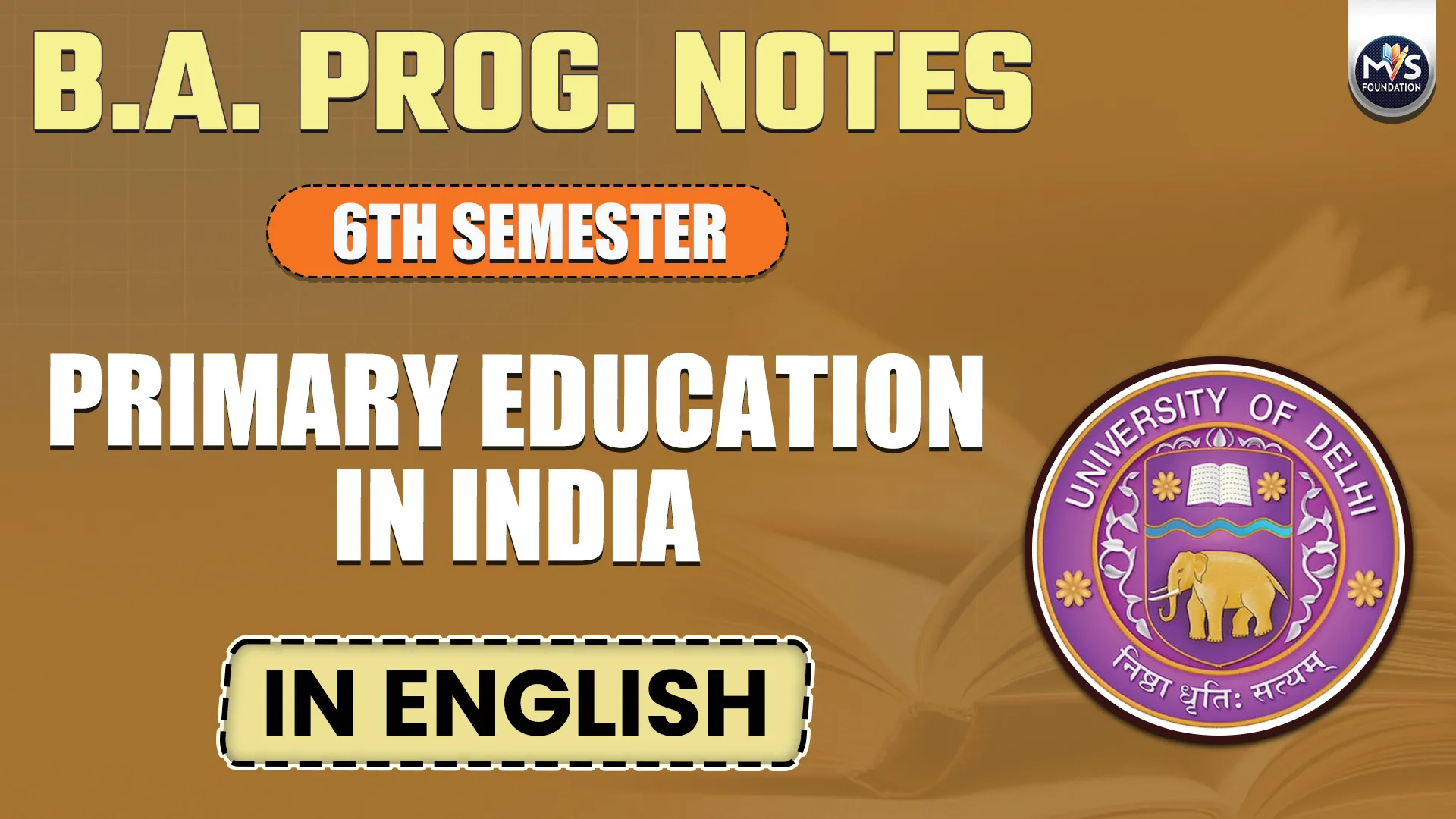
Get in Touch
We will get back to you within 24 hours.
Welcome to MVS Blog

Primary Education in India
6th Semester
Q 1 - How does primary education contribute to nation building? Analyze its major challenges and discuss in detail the opportunities for innovation and improvement in it.
Answer –
Introduction
Primary education is the foundation of any nation's educational system, which lays the groundwork for intellectual, social, and moral values in children. It not only promotes intellectual development but also forms the basis for the emotional and physical growth of children. In a country like India, primary education not only encourages individual development but also strengthens social equality, economic progress, and national unity. Therefore, a strong primary education system paves the way for a prosperous nation.
Views of some Famous scholars on primary education:
Contribution of primary education in nation building :
Primary education develops the human resource of the nation, which later plays a vital role in nation-building by strengthening social, economic, and democratic values in the following ways:–
Major challenges and opportunities for innovation and reform in primary education:
India has achieved many milestones in the field of primary education, but this sector still faces some significant challenges. These issues have also provided opportunities for innovation and reforms to improve the education system:–
Challenge: In rural and remote areas, schools face a lack of basic infrastructure such as proper buildings, electricity, toilets, and water. Additionally, access to education for girls and children from marginalized communities remains limited, which hinders inclusive development.
Innovation and Reform: The government launched residential schools like Kasturba Gandhi Balika Vidyalayas, which led to an increase in girls’ enrollment. The ‘Beti Bachao, Beti Padhao’ campaign promoted gender equality. Moreover, the expansion of transportation services and the introduction of digital classrooms have made education accessible even in far-flung areas.
Challenge: A high teacher-student ratio and inadequate teacher training affect the quality of teaching. Traditional methods have been weak in developing children's active participation and understanding.
Innovation and Reform: The National Curriculum Framework (NCF) 2005 recommended activity-based learning, which increased students’ interest and participation in the classroom. Digital platforms like DIKSHA have provided modern training and resources to teachers. The initiative to open schools in every district has also improved the availability of education at the local level.
Challenge: The dropout rate is high among economically weaker sections. Additionally, the lack of inclusive education for children with disabilities and special needs remains a major obstacle.
Innovation and Reform: The Mid-Day Meal Scheme improved attendance by providing nutrition to children. The RTE Act 2009 and the RPWD Act 2016 made education inclusive and rights-based. The Samagra Shiksha Abhiyan contributed to developing an education system that ensures quality and equal opportunities for all.
Challenge: The lack of digital resources and limited access to technology makes education less engaging and effective for children, especially in rural areas.
Innovation and Reform: E-Pathshala, DIKSHA, and other digital platforms have ensured the free availability of digital textbooks, videos, and teaching materials. This has made learning more interactive, visual, and accessible, leading to improved understanding and interest among students.
Challenge: The traditional rote-based education system suppresses children's creativity, analytical ability, and tendency for joyful learning.
Innovation and Reform: Activity-Based Learning (ABL) has made classrooms more participatory and experiential. The 'Read India' campaign by the Pratham organization demonstrated that this approach led to significant improvement in children's learning outcomes. This method encourages curiosity and creative thinking among children.
Conclusion :
Primary education is the foundation of nation-building. Although it has faced many challenges, innovations and policy efforts have improved the quality, inclusiveness, and accessibility of education. It remains essential to further strengthen these successful initiatives in the future as well.
0 Response